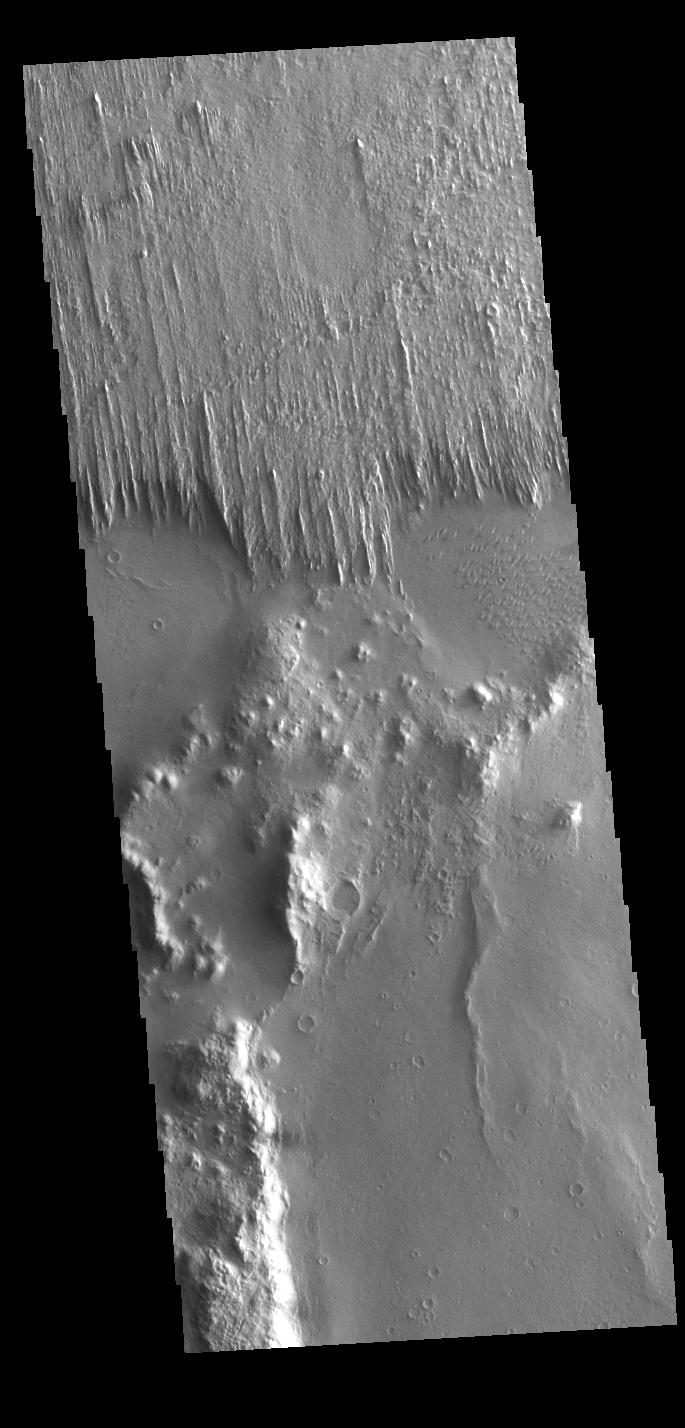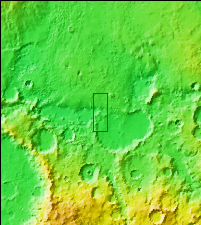
|
Apollinaris Sulci Yardangs
- Click the image above for a larger view
- Full-Res JPEG (685 x 1428) (108.1 kB)
- Full-Res TIFF (685 x 1428) (731.3 kB)
Caption:

Context image
Today's VIS image shows part of Apollinaris Sulci. Yardangs are present at the top of this VIS image. These features are created by long term winds scouring a poor cemented surface material into linear ridges and valleys. The direction of the ridge/valley is aligned with the wind direction, indicating the dominant wind direction in this region was north/south. These yardangs are the southern margin of Apollinaris Sulci, located south of Apollinaris Mons. It has been suggested that this region of Mars provides a large percentage of the surface dust seen around the planet. Ash falls from nearby volcanoes may have been the source of the surface materials eroded into these and other wind etched landforms.
Orbit Number: 86395 Latitude: -12.5877 Longitude: 177.796 Instrument: VIS Captured: 2021-06-06 01:38
Background Info:
Please see the THEMIS Data Citation Note for details on crediting THEMIS images.
NASA's Jet Propulsion Laboratory manages the 2001 Mars Odyssey mission for NASA's Science Mission Directorate, Washington, D.C. The Thermal Emission Imaging System (THEMIS) was developed by Arizona State University, Tempe, in collaboration with Raytheon Santa Barbara Remote Sensing. The THEMIS investigation is led by Dr. Philip Christensen at Arizona State University. Lockheed Martin Astronautics, Denver, is the prime contractor for the Odyssey project, and developed and built the orbiter. Mission operations are conducted jointly from Lockheed Martin and from JPL, a division of the California Institute of Technology in Pasadena.
Cataloging Keywords:
| Name | Value | Additional Values |
|---|---|---|
| Target | Mars | |
| System | ||
| Target Type | Planet | |
| Mission | 2001 Mars Odyssey | |
| Instrument Host | Mars Odyssey | |
| Host Type | Orbiter | |
| Instrument | Thermal Emission Imaging System (THEMIS) | |
| Detector | ||
| Extra Keywords | Dust, Grayscale, Mountain, Thermal, Volcano | |
| Acquisition Date | ||
| Release Date | 2021-11-02 | |
| Date in Caption | 2021-06-06 | |
| Image Credit | NASA/JPL-Caltech/ASU | |
| Source | photojournal.jpl.nasa.gov/catalog/PIA24952 | |
| Identifier | PIA24952 | |
